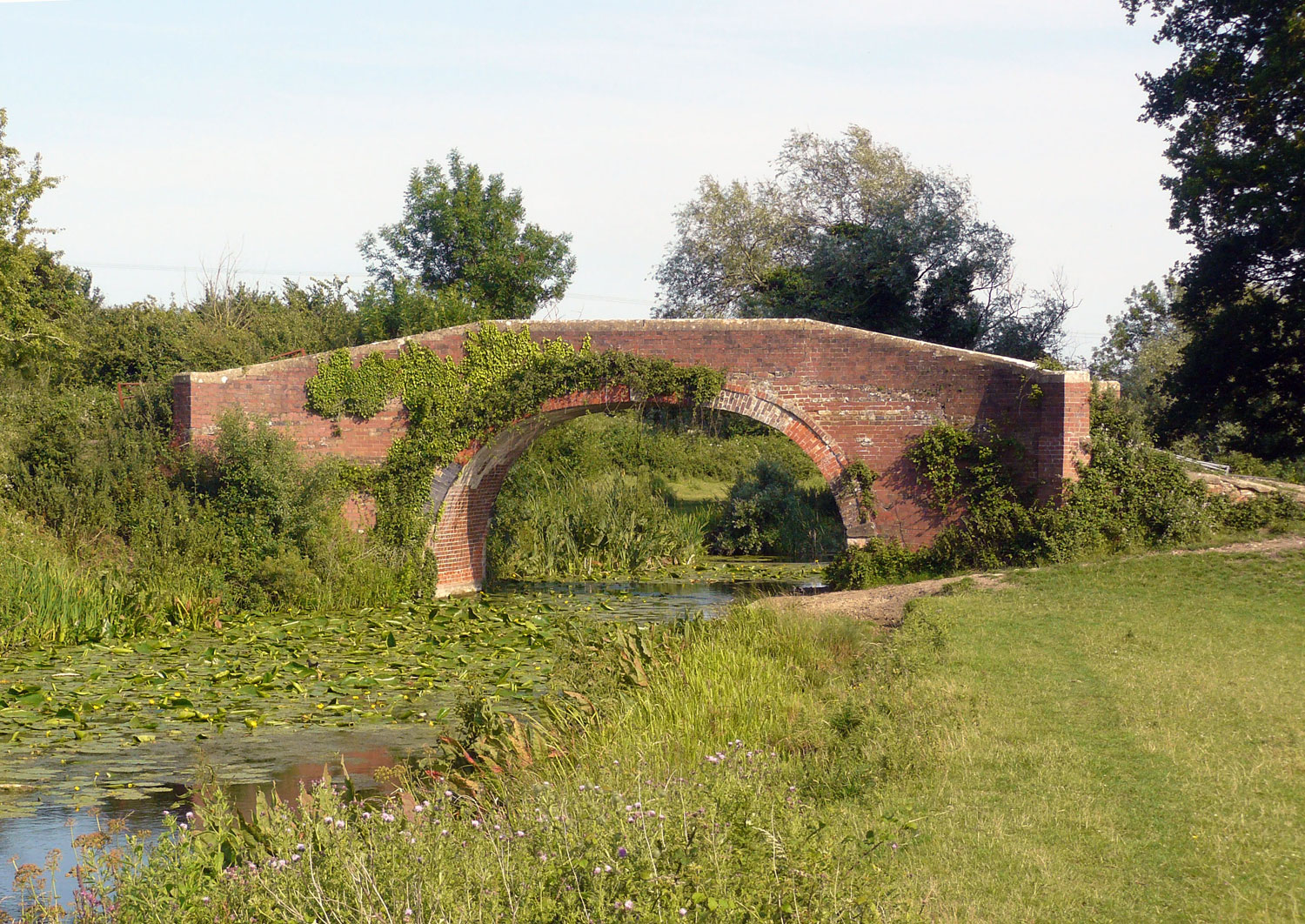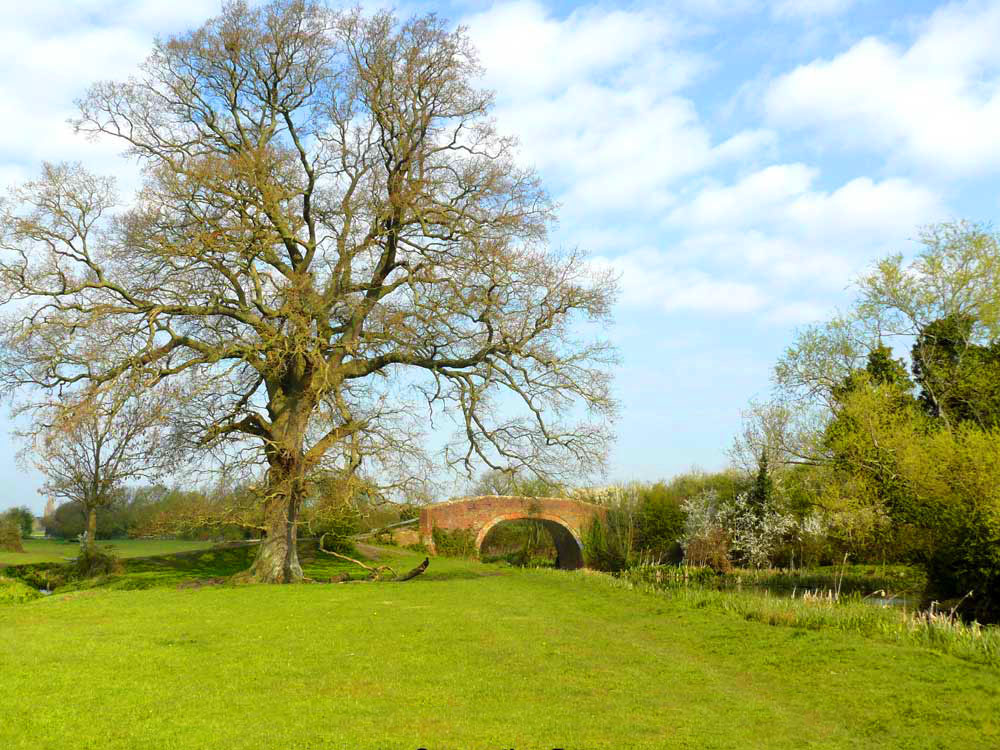Hugh Conway-Jones describes how this classic bridge to the west of the Bristol Road has survived three proposals to demolish it.


This bridge is a classic example of an eighteenth century hump-back canal bridge, but we are lucky that it still exists as there have been three proposals to demolish it. The current name is the widely used term for any private bridge that had to be provided by a canal company to allow an occupier to access any part of his land cut off by a canal. In this case, the canal cut through an estate later known as Parklands, running down the hill below Whitminster village. Until recently, the bridge was known by the name of the estate owner - initially Richard Martin of Hardwicke Court, who later became the leading partner in a Stroud bank.
The design follows other early canal bridges, with the two side walls sloping back slightly and curving outwards at each end to provide a more stable structure. Realising that local bricklayers might not be familiar with including such features during construction, the Stroudwater Company arranged for a model to be provided by fashionable local architect Anthony Keck, who was a member of the Committee.
The navvies digging the canal were at work in the estate in November 1776, when they were told to pile up some of the spoil to form the approach embankments for the planned bridge. The bricks needed would have been made in temporary kilns using clay found while digging the canal, and some bricks were made on Martin's own land as he later received damages occasioned by a 'brick yard'. The bridge must have been complete by August 1777, when an order was given to let water into the canal so it could be used for taking materials up to the Bristol Road.
The bridge next appears in the records in 1833 when there was a proposal to replace it with a swing bridge. By this time, the estate had passed to Richard Martin's son, also Richard, who had built himself a grand new house on the estate with a fine view south over the Frome valley. He negotiated an agreement with the Stroudwater Company allowing him to replace the hump-back with a swing bridge on the understanding that he would take full responsibility for future maintenance. This agreement was signed in 1836, but for some reason the change of design was not carried out, leaving Martin responsible for the maintenance of the brick bridge.
By 1902, the estate then known as Parklands was owned by William Grey Robinson, and he made a second proposal to replace the brick structure with a wooden swing bridge. Robinson was evidently not aware of the earlier agreement, and the Stroudwater Company's response involved some duplicity. They refused permission for the change in design on the grounds that swing-bridges delayed the traffic. Three years later, however, when there was a need for maintenance, they relied on the 1836 agreement to limit their role to offering advice, and it was Robinson who had to pay for repairs.


The third proposal to replace the brick bridge came in 1982 when the canal was no longer navigable. The Stroudwater Company heard a rumour that local farmer Michael Pockett was proposing to place a small diameter pipe in the canal and infill around it. By this time of course, there was serious talk about restoring the canal. So the Company Clerk wrote to Pockett reminding him of the need to maintain the head-room over the canal, and this was sufficient to deflect the proposal.
We can now celebrate the bridge as a remarkable survivor, and there is an added bonus. An iron strip on one corner of the bridge shows cuts made by the tow ropes of countless horse-drawn barges passing by. The bridge is in a delightful setting beside an oak tree that must be as old as the bridge itself, and we look forward to the day when boats will once more be ‘passing by’.
Richard Martin snr mentioned in ‘Notes & Recollections of Stroud’ by Paul Hawkins Fisher.
Bridge model mentioned in D1180/1/1 p71.
Build progress from D1180/1/1 p99, 146, 227.
Parklands House information from https://www.british-history.ac.uk/vch/glos/vol10/pp291-294.
First proposal to demolish the bridge from D1180/acc10879/Box1/2.
Second proposal to demolish the bridge from D1180/1/7 p343; D1180/9/10 p623; D1180/1/8 p33; D1180/9/11 p371.
Third proposal to demolish the bridge from D1180/acc13370/box1/4.